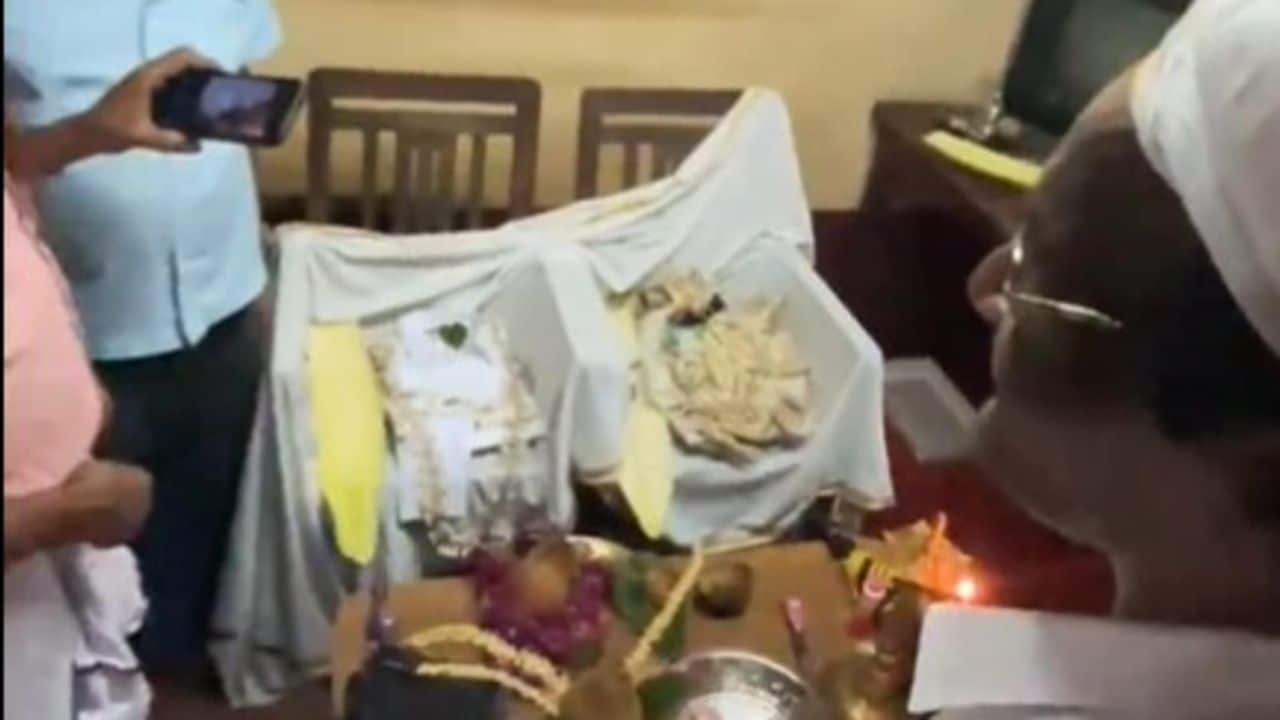On July 28, a strange event in Karnataka saw the posthumous marriage of two newborns as their parents hoped for a happy ending for their souls, know the meaning of the Pretha Kalyanam tradition
The parents of two children who were posthumously married on July 28 in a strange wedding in the Karnataka region of Dakshina Kannada wished for a blissful afterlife. In the Dakshina Kannada area of Karnataka, Shobha and Chandappa were wed in a traditional marriage ceremony thirty years after their passing. There was no doubt that this was a “Pretha Kalyanam,” or “marriage of the dead,” and not just any marriage.
What Is Pretha Kalyanam Marriage And Is Meaning As Video Of Two Newborns Being Married After Their Death In Karnataka Goes Viral
मौत के 30 साल बाद हुई 'दूल्हा-दुल्हन' की शादी
दरअसल, कर्नाटक और केरल के कुछ जिलों में 'प्रेथा कल्याणम' या मृत्यु के बाद शादी की रस्म या परंपरा निभाई जाती है।#viralvideo #death #PrethaKalyanam #Kerala #trendingreels pic.twitter.com/E8F6akrlLv
— India TV (@indiatvnews) July 30, 2022
'Marriage of the dead'!
In India's Karnataka state, a marriage ritual called Pretha Kalyanam is conducted for babies who died during childbirth 30 years after their death. The communities here believe this as a way of honouring their spirits using effigies followed by a feast. pic.twitter.com/jXJVD6D49n— My Newz Viewz (@mynewzviewz) July 30, 2022
What Is Pretha Kalyanam? 30 Years After Their Deaths, A Karnataka Couple Gets Married Posthumously
What is the tradition of Pretha Kalyanam:
A marriage rite known as “Pretha Kalyanam” is still carried out for newborns who passed away at delivery in various areas of Kerala and Karnataka. The neighborhood regarded this as a way of honoring their souls. A YouTuber named Anny Arun went to the wedding and tweeted about every aspect of the unusual event.
According to Anny Arun’s 20-tweet thread, the marriage was as formal as it comes for a marriage ceremony. The use of an effigy of the bride and groom instead of a genuine bride and groom was the sole distinction. The YouTuber claimed that “Saptapadhi,” also called as “Saat-Phere,” was a part of the bridal ceremony. He observed that rather than being solemn like a funeral, the ambiance during the wedding was cheerful.
Children and singles are not allowed to attend as witnesses to the wedding:
However, In one of his comments, he claimed that children and single people were not allowed to observe weddings. Furthermore, he said that there were not just ceremonies but also a sumptuous feast. Fish fry, chicken sukka, Kadle balyar, and mutton curry with idli were all options on the list. He ended his message by saying, “And “happily ever after” is lived by the pair! Most likely in the next lifetime!”. After the marriage ceremony, delicious dishes are served on banana leaves.



